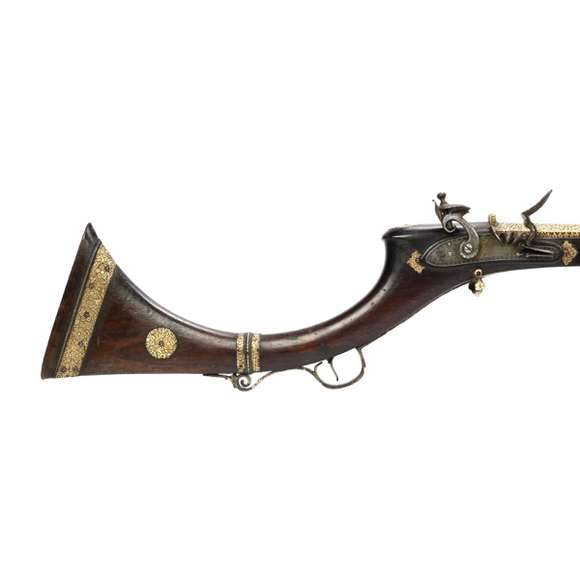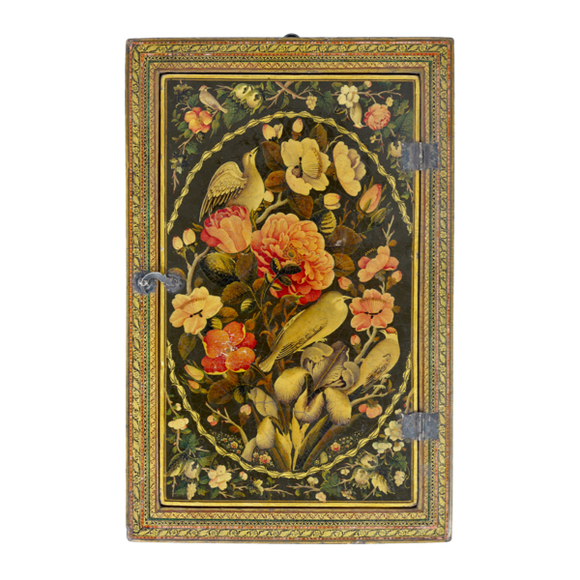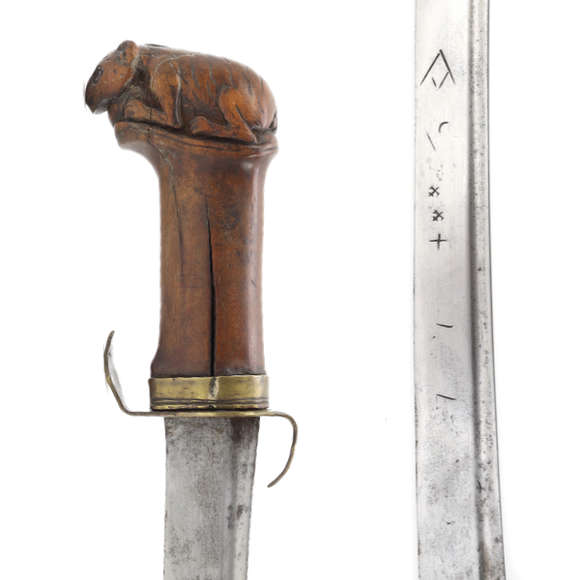Language: Arabic
Description
Dhu alfaqar (ذو الفقار) also spelled Zulfiqar, Zu'l-Faqâr, Dhulfiqar, Ḏū-l-Faqār or Ḏū-l-Fiqār is a legendary sword surrounded by various, often contradicting stories.
The 10th century Persian classic Tarikh al-Tabari (تاريخ الطبري) or "History of the Prophets and Kings" by Muhammad ibn Jarir al-Tabari (838-923) states that the sword was given to Ali by Muhammad during the battle of Uhud in 625 A.D.
According to the story, Imam Ali (cousin and son-in-law of Muhammad), broke his sword during the battle of Uhud in 625 A.D. While fighting continued he went to Muhammad to say he couldn't fight anymore, after which Muhammad gave him the sword called Zulfiqar. Ali fiercely continued fighting after which Muhammad proclaimed his famous words:
La Fata illa Ali la saif illa Zulfiqar
(لا فتى إلى علي لا سيف إلى ذلفيقر)
"No warrior but Ali, no sword but Zulfiqar"
This phrase was frequently used as a talisman for Muslim warriors, and often features on Islamic blades.
Shape and provenance
The Tarikh al-Tabari makes no mention of Zulfiqar's shape.
In Shahnameh ("The Book of Kings"), written between 977-1010A.D., Zulfiqar is supposedly a bifurcated sword attributed to mythical Iranian hero Rostam.
In Noskhe-ye Haft Darvish ("The Copy of Seven Dervishes"), 1000 A.D., Zulfiqar is depicted as a bifurcated blade.
According to Al Atharhul-Bakiya ("The Chronology of Ancient Nations"), 1590-1688 A.D., Zulfiqar was created by God a 1000 years before the creation of the world and Adam. God looked at the sword, and upon his gaze the sword split into two, making it bifurcated.
Other sources state Muhammad had obtained it from an infidel called Munabbih Ibn al-Hadjdadj, and yet others say it was from a man called Ase Ibn Moniyeh.
Sir Richard Francis Burton wrote that Zulfiqar was originally the sword of Archangel Gabriel that was passed down to Muhammad and then to Ali.
Alternatively, Zulfiqar can be translated also as "having a spine", "being notched" and it is quite likely that the real Zulfiqar, if it ever existed, was not a bifurcated blade at all. Over the centuries, many versions of Islamic swords have been made in honor of Zulfiqar. Some show several interpretations of the bifurcated tip, others are notched, and yet others combine these features.

One of the many interpretations of the shape of Zulfiqar. This time, of general khanda form.
Metropolitan Museum of Arts, New York. Accession number: 36.25.1508.
References
The Mystery Behind Dhulfighar/Zolfaghar, the bifurcated sword of Ali in Manouchehr Moshtagh Khorasani; Arms and Armor from Iran: The Bronze Age to the End of the Qajar Period, Legat Verlag, 2006, pages 195-197.
Manouchehr Moshtagh Khorasani; Lexicon of Arms and Armor from Iran Legat Verlag, 2010, pages 474-476.






